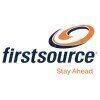
i
Infosys BPM
Filter interviews by
Infosys BPM Assistant Accountant Executive Interview Questions and Answers
7 Interview questions
Accounting fundamentals are the basic principles and concepts that guide the preparation and presentation of financial statements.
Accounting equation (Assets = Liabilities + Equity)
Double-entry accounting
Accrual vs. cash basis accounting
Revenue recognition principles
Matching principle
Conservatism principle
Historical cost principle
Materiality principle
P2P cycle stands for Procure to Pay cycle, which is the process of obtaining goods or services from a vendor and paying for them.
P2P cycle involves requisitioning, purchasing, receiving, and paying for goods or services.
It starts with a purchase requisition, followed by purchase order creation, goods receipt, invoice verification, and payment processing.
Efficient P2P cycle management helps in controlling costs, im...
Depreciation is the allocation of the cost of a tangible asset over its useful life.
Depreciation is a non-cash expense that reduces the value of an asset over time.
It reflects the wear and tear, obsolescence, or decrease in value of the asset.
Common methods of calculating depreciation include straight-line, double declining balance, and units of production.
Example: A company purchases a delivery truck for $50,000 ...
PTP Process stands for Procure-to-Pay Process, which involves the entire cycle of purchasing goods or services, receiving them, and paying for them.
PTP Process starts with the creation of a purchase order (PO) based on the requirements of the organization.
Once the goods or services are received, the receiving department matches the received items with the PO to ensure accuracy.
After verification, the invoice is pr...
What people are saying about Infosys BPM





I am familiar with a variety of T-Codes in SAP, including but not limited to FI, CO, MM, and SD modules.
I am familiar with T-Codes related to Financial Accounting (FI) such as F-02 (Enter G/L Account Posting) and F-30 (Post with Clearing)
I am knowledgeable about Controlling (CO) T-Codes like KSB1 (Cost Centers) and KSB2 (Cost Elements)
I have experience with Material Management (MM) T-Codes like MIGO (Goods Movemen...
Provision for bad debts is an estimated amount set aside by a company to cover potential losses from customers who may not pay their debts.
Provision for bad debts is recorded as a contra asset account on the balance sheet.
It is typically calculated as a percentage of accounts receivable or based on historical data of bad debts.
The entry for provision for bad debts involves debiting the bad debt expense account and...
A pivot table in MS Excel is a powerful tool used to summarize and analyze large amounts of data.
Pivot tables allow you to reorganize and summarize selected columns and rows of data in a spreadsheet.
You can easily create pivot tables by selecting the data you want to analyze and then inserting a pivot table.
Pivot tables can help you quickly analyze trends, patterns, and relationships within your data.
You can also ...
Infosys BPM Assistant Accountant Executive Interview Experiences
5 interviews found
I appeared for an interview in Oct 2024, where I was asked the following questions.
- Q1. Basic questions on accounting
- Q2. About Excel and PowerPoint
I applied via Referral and was interviewed in Oct 2023. There were 3 interview rounds.

(2 Questions)
- Q1. Salary expectation
- Q2. Work experience
(4 Questions)
- Q1. What is account payable?
- Ans.
Accounts payable is the amount of money a company owes to its suppliers or vendors for goods or services purchased on credit.
Accounts payable represents the short-term debt a company owes to its suppliers.
It is listed as a liability on the company's balance sheet.
Accounts payable is typically paid within a certain period, often 30, 60, or 90 days.
Examples include invoices from suppliers for inventory purchases, utiliti...
- Q2. What is PTP Process?
- Ans.
PTP Process stands for Procure-to-Pay Process, which involves the entire cycle of purchasing goods or services, receiving them, and paying for them.
PTP Process starts with the creation of a purchase order (PO) based on the requirements of the organization.
Once the goods or services are received, the receiving department matches the received items with the PO to ensure accuracy.
After verification, the invoice is process...
- Q3. How many T- Codes do you know of SAP?
- Ans.
I am familiar with a variety of T-Codes in SAP, including but not limited to FI, CO, MM, and SD modules.
I am familiar with T-Codes related to Financial Accounting (FI) such as F-02 (Enter G/L Account Posting) and F-30 (Post with Clearing)
I am knowledgeable about Controlling (CO) T-Codes like KSB1 (Cost Centers) and KSB2 (Cost Elements)
I have experience with Material Management (MM) T-Codes like MIGO (Goods Movement) an...
- Q4. What's is depriciation?
- Ans.
Depreciation is the allocation of the cost of a tangible asset over its useful life.
Depreciation is a non-cash expense that reduces the value of an asset over time.
It reflects the wear and tear, obsolescence, or decrease in value of the asset.
Common methods of calculating depreciation include straight-line, double declining balance, and units of production.
Example: A company purchases a delivery truck for $50,000 with ...
Interview Preparation Tips
Skills evaluated in this interview
I applied via Company Website and was interviewed in Jan 2023. There were 3 interview rounds.

(3 Questions)
- Q1. All accrual concept journal entry
- Q2. Entry for Provision for bad debts
- Ans.
Provision for bad debts is an estimated amount set aside by a company to cover potential losses from customers who may not pay their debts.
Provision for bad debts is recorded as a contra asset account on the balance sheet.
It is typically calculated as a percentage of accounts receivable or based on historical data of bad debts.
The entry for provision for bad debts involves debiting the bad debt expense account and cred...
- Q3. Pivot table in ms excel
- Ans.
A pivot table in MS Excel is a powerful tool used to summarize and analyze large amounts of data.
Pivot tables allow you to reorganize and summarize selected columns and rows of data in a spreadsheet.
You can easily create pivot tables by selecting the data you want to analyze and then inserting a pivot table.
Pivot tables can help you quickly analyze trends, patterns, and relationships within your data.
You can also use p...
(2 Questions)
- Q1. Round shift is it OK?
- Q2. Any thing is OK for me
I applied via Recruitment Consulltant and was interviewed before Jun 2023. There was 1 interview round.
(2 Questions)
- Q1. What is P2P cycle
- Ans.
P2P cycle stands for Procure to Pay cycle, which is the process of obtaining goods or services from a vendor and paying for them.
P2P cycle involves requisitioning, purchasing, receiving, and paying for goods or services.
It starts with a purchase requisition, followed by purchase order creation, goods receipt, invoice verification, and payment processing.
Efficient P2P cycle management helps in controlling costs, improvi...
- Q2. What you know about accounting fundamental
- Ans.
Accounting fundamentals are the basic principles and concepts that guide the preparation and presentation of financial statements.
Accounting equation (Assets = Liabilities + Equity)
Double-entry accounting
Accrual vs. cash basis accounting
Revenue recognition principles
Matching principle
Conservatism principle
Historical cost principle
Materiality principle
Interview Preparation Tips
I applied via Approached by Company and was interviewed before May 2023. There were 2 interview rounds.
What is general ledger?
(1 Question)
- Q1. What is debit note and credit note, why it is issued?
- Ans.
Debit note and credit note are financial documents used to record adjustments in accounts payable and accounts receivable.
Debit note is issued when a buyer returns goods to a seller or when there is an overcharge in the invoice amount.
Credit note is issued when a seller returns goods to a buyer or when there is an undercharge in the invoice amount.
Debit note increases the buyer's accounts payable and decreases the sell...
Interview Preparation Tips
Interview questions from similar companies

Interview Questionnaire
1 Question
- Q1. Accounting related

I applied via Referral and was interviewed in Jan 2021. There were 3 interview rounds.
Interview Questionnaire
1 Question
- Q1. Which is the most competitive work and after 5 or 10 in which position did company want to reach
- Ans.
The accounting field is highly competitive, with companies aiming for top positions in financial accuracy and compliance within 5-10 years.
Market Leadership: Companies strive to be leaders in financial reporting and compliance, ensuring accuracy and transparency in their financial statements.
Technological Integration: Firms aim to adopt advanced accounting software and AI tools to enhance efficiency and reduce errors i...
Interview Preparation Tips

- Q1. R1r CM ke bare me
- Q2. Why do you want to join R1 RCM?

I appeared for an interview in Mar 2025, where I was asked the following questions.
- Q1. Introduce yourself
- Ans.
Detail-oriented Account Assistant with a passion for numbers and a strong background in financial management and customer service.
Education: Bachelor's degree in Accounting from XYZ University.
Experience: Over 2 years of experience in accounts payable and receivable.
Skills: Proficient in QuickBooks and Excel for financial reporting.
Achievements: Streamlined invoicing process, reducing processing time by 20%.
Interperson...
- Q2. Speak about 2 mint for any one topic
- Ans.
The importance of effective communication in the workplace enhances collaboration and productivity among team members.
Effective communication fosters teamwork; for example, regular team meetings can align goals and expectations.
Clear communication reduces misunderstandings; using tools like emails or project management software can help clarify tasks.
Active listening is crucial; it ensures that all team members feel he...


(2 Questions)
- Q1. What is Accounts Payable ?
- Ans.
Accounts Payable is the amount of money a company owes to its suppliers or vendors for goods or services purchased on credit.
Accounts Payable is a liability on the balance sheet
It represents the company's obligation to pay off short-term debts to creditors
It includes invoices from suppliers, utility bills, and other expenses
Accounts Payable is typically recorded when goods or services are received, not when they are pa...
- Q2. What is Procure to pay ?
- Ans.
Procure to pay is the process of obtaining and paying for goods and services from suppliers.
Involves requesting goods/services, receiving them, approving invoices, and making payments
Includes steps like purchase requisition, purchase order, goods receipt, invoice verification, and payment processing
Helps streamline the purchasing process and ensure timely payments to suppliers
Infosys BPM Interview FAQs
Tell us how to improve this page.
Infosys BPM Interviews By Designations
- Infosys BPM Processing Executive Interview Questions
- Infosys BPM Senior Processing Executive Interview Questions
- Infosys BPM Process Specialist Interview Questions
- Infosys BPM Accountant Interview Questions
- Infosys BPM Account Assistant Interview Questions
- Infosys BPM Business Analyst Interview Questions
- Infosys BPM System Engineer Interview Questions
- Infosys BPM Team Lead Interview Questions
- Show more
Interview Questions for Popular Designations
- Assistant Manager Interview Questions
- Senior Executive Interview Questions
- Accountant Interview Questions
- Executive Interview Questions
- Account Assistant Interview Questions
- Finance Executive Interview Questions
- Senior Accounts Executive Interview Questions
- Accounts Officer Interview Questions
- Show more
Overall Interview Experience Rating
based on 6 interview experiences
Difficulty level
Duration
Interview Questions from Similar Companies
Infosys BPM Assistant Accountant Executive Reviews and Ratings
based on 16 reviews
Rating in categories
|
Senior Processing Executive
13k
salaries
| ₹2 L/yr - ₹5.6 L/yr |
|
Process Specialist
9k
salaries
| ₹2.9 L/yr - ₹8 L/yr |
|
Processing Executive
5.7k
salaries
| ₹1.5 L/yr - ₹4 L/yr |
|
Account Assistant
4.2k
salaries
| ₹2.1 L/yr - ₹5 L/yr |
|
Accountant
3.2k
salaries
| ₹2.5 L/yr - ₹6.6 L/yr |

Accenture

Teleperformance

Concentrix Corporation

iEnergizer
- Home >
- Interviews >
- Infosys BPM Interview Questions












